Building your dream home is one of the biggest investments of your life — both financially and emotionally.
Before the first brick is laid, there’s one document that protects you from misunderstandings and future disputes:
👉 The Construction Agreement.
A well-written construction agreement clearly defines scope, cost, materials, timeline, and responsibilities between you and the builder.
Let’s break down what every homeowner should look for before signing one.
🏠 1. Project Details and Scope of Work
The agreement should clearly describe what’s being built — and to what extent.
🔹 Include:
Site address and plot size (e.g., 30×40, 2400 sq.ft.)
Total built-up area (e.g., G+1, 2000 sq.ft.)
Type of construction (residential, duplex, villa, etc.)
Number of bedrooms, bathrooms, and additional structures (compound wall, sump, borewell, etc.)
✅ Why It Matters:
This ensures that both parties have the same understanding of the project. Ambiguity here can lead to disputes later.
🧱 2. Detailed Specifications of Materials
Avoid vague terms like “good quality materials.”
Ask for a detailed list of brands and grades to be used for each component.
🧩 Example:
| Work Type | Material | Brand / Grade |
|---|---|---|
| Cement | OPC 53 Grade | UltraTech / Ramco |
| Steel | TMT Fe500 | JSW / Tata |
| Flooring | Vitrified Tiles | Kajaria / Somany |
| Paint | Interior Emulsion | Asian Paints / Berger |
✅ Why It Matters:
A proper specification sheet ensures transparency and quality control — preventing cheap material substitution.
🧮 3. Project Cost and Payment Schedule
The agreement should mention the total agreed cost (e.g., ₹2,000 per sq.ft. or a total lump sum).
Break it into stage-wise payments linked to work progress.
📊 Example Payment Stages:
Foundation – 10%
Roof slab – 25%
Brickwork & plastering – 25%
Flooring & painting – 25%
Finishing & handover – 15%
✅ Why It Matters:
You pay only after completion of each milestone, ensuring accountability and steady cash flow.
⏰ 4. Construction Timeline and Completion Date
Your agreement should include:
Project start date
Expected completion date
Delay penalty clause
💡 Example:
“For every week of delay beyond the agreed completion date (not due to force majeure), the contractor shall pay ₹___ per day as penalty.”
✅ Why It Matters:
This helps keep your builder committed to deadlines.
🔄 5. Change Order (Variation) Clause
Design or material changes are common during construction — but they should be documented and approved in writing.
🔹 Include:
How change requests are made (written/email)
How cost and time impact are calculated
✅ Why It Matters:
Prevents disputes when additional work or upgrades are requested later.
🧾 6. Warranty & Defect Liability Period
A good builder provides a defect liability period (DLP) — a warranty covering issues after handover.
Typical Coverage:
Structural defects (1–5 years)
Plumbing and electrical issues (6–12 months)
Leakage or cracks (as applicable)
✅ Why It Matters:
Assures peace of mind after project completion — builder is responsible for repair if issues arise during this period.
⚖️ 7. Dispute Resolution & Legal Jurisdiction
No matter how good the relationship, misunderstandings can occur.
The contract should define how disputes will be resolved.
🔹 Mention:
Step 1: Mutual discussion
Step 2: Mediation / Arbitration
Step 3: Legal proceedings (mention city jurisdiction)
✅ Why It Matters:
Saves time and money if any issue reaches a legal stage.
🧍♂️ 8. Insurance, Safety, and Liability
Ensure the builder takes responsibility for:
Worker safety and labour insurance
Site accidents or property damage during construction
Local authority compliance (labour laws, safety norms)
✅ Why It Matters:
Prevents you from being held legally liable for on-site incidents.
📋 9. Documents to Attach with the Agreement
Attach supporting documents for complete clarity:
Approved floor plan
Material specification sheet
Project schedule
BOQ (Bill of Quantities)
Payment milestone chart
Copies of builder’s license, GST, or RERA registration
💡 10. Final Checklist Before Signing
✅ Read every clause carefully — don’t rush.
✅ Get clarifications in writing, not verbally.
✅ Keep signed copies with both parties.
✅ Involve a civil engineer or legal advisor to review the document.
🧠 Final Thoughts
A transparent and detailed construction agreement is not just paperwork — it’s your protection shield.
It ensures clarity, fairness, and trust between you and your builder.
Remember: “Good buildings are built on strong foundations — and strong agreements.”
